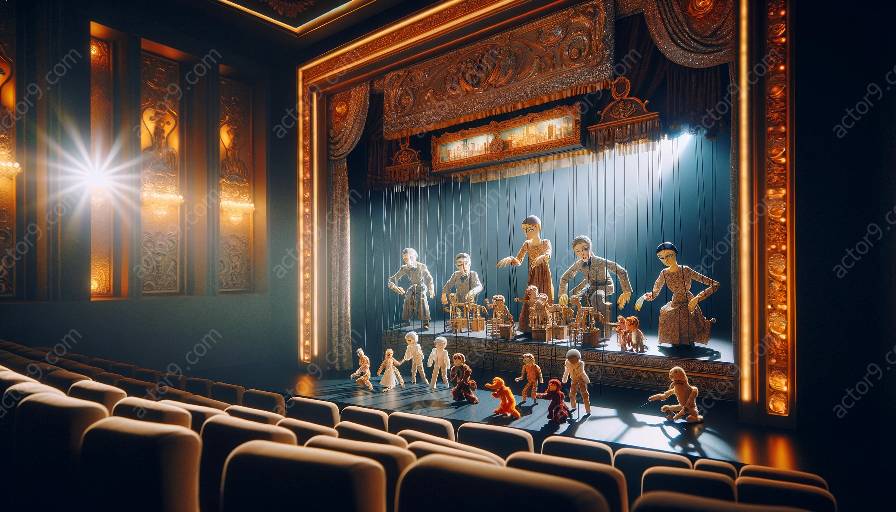Understanding Puppetry's History
Puppetry has a rich history that dates back thousands of years, with roots in ancient civilizations like the Greeks, Egyptians, and Chinese. Traditional puppetry has often been associated with entertainment or storytelling for religious or cultural rituals.
Yet, in contemporary times, puppetry has evolved far beyond traditional roles. This art form has transcended its historical boundaries and has increasingly become a vehicle for challenging and redefining notions of performance art.
Expanding the Definition of Performance Art
In the modern context, puppetry is challenging conventional ideas of performance art by incorporating innovative multimedia techniques, exploring complex narratives, and engaging with societal issues. Puppetry is no longer confined to a simple show for children but has expanded its reach to adult audiences and diverse artistic expressions.
This expansion has unfolded as a result of artists pushing the boundaries of what puppetry can achieve. For example, contemporary puppeteers are combining various forms of art, such as dance, music, and digital media, to create immersive performances that offer unique experiences to their audiences.
Furthermore, puppetry has become a means of addressing pressing social and political concerns. From environmental activism to questioning identity and power structures, puppetry has emerged as a powerful tool for expressing and challenging societal norms through the medium of art.
The Historical Significance of Puppets
While puppetry has undoubtedly evolved, it is essential to recognize its historical significance. Puppets have been a part of various cultural and historical practices, bringing joy, depicting stories, and conveying messages in creative and innovative ways.
Throughout history, puppets have been used to communicate complex narratives and ideas, often pushing the boundaries of expression through non-verbal communication. Whether in traditional handcrafted forms or contemporary digital avatars, puppets have remained a mirror to the evolving human perceptions and artistic interpretations.
Shaping the Future of Puppetry
As we continue to witness the challenging of traditional notions of performance art in puppetry, it is crucial to acknowledge the profound impact of this evolution. The transformation of puppetry into a contemporary, multi-disciplinary art form has opened up new avenues for self-expression, societal commentary, and artistic innovation.
Artists and audiences alike are increasingly recognizing the depth and complexity that puppetry brings to the realm of performance art. By embracing this evolution, we are contributing to a reimagining of our own artistic and cultural landscape.
As puppetry continues to defy conventional expectations and assert its significance in contemporary art, it prompts us to rethink the relationship between performers, viewers, and the art itself. This ongoing dialogue between tradition and innovation is propelling puppetry into new territories, ensuring its place on the forefront of artistic expression.


























